Jewellery Making: The Materials Used!
23/12/2021 2021-12-23 12:15Jewellery Making: The Materials Used!
[vc_row][vc_column][vc_column_text]
Jewellery making, when allowed back to the veritably first daisy chain that most women make, as a child. We love to make and design jewellery, and have been doing so for thousands of times.
Our ancestor’s discovery of different accoutrements and how to work with them was an advance in the development of the art of jewellery.
We have listed the common, and not so common accoutrements used in jewellery making along with a brief description and the pros and cons of using them in your jewellery designs.
1. Silver
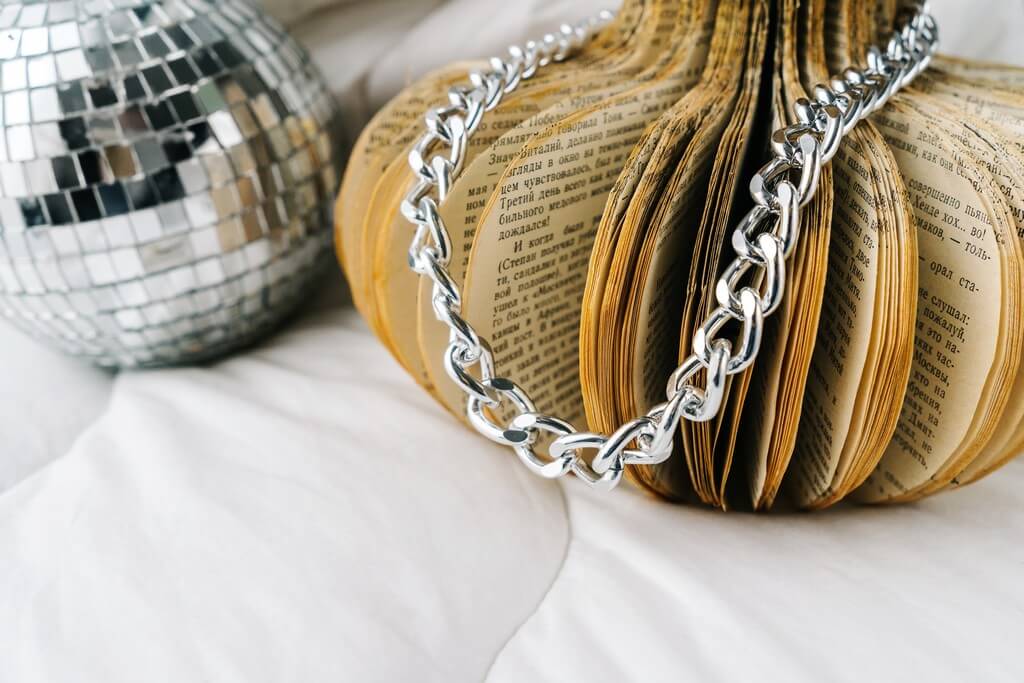
Silver is a precious metal. It’s classified as one of the Metals of Antiquity material that humans correlated and used in neolithic times.
The major use of silver, besides being used for concoction throughout world history, was in the manufacture of jewellery and other general- use particulars. This is still the case.
Silver is favourable for chokers, bracelets, cufflinks, belt buckles and body jewellery. It’s perfect for fine jewellery, accessories and silverware.
The Hardness of Silver
Due to the softness of pure silver (2.5 to 3 on the Mohs Hardness scale) it’s alloyed with copper. In jewellery, sterling silver comprises 92.5 silver and 7.5 copper. Similar to many materials, there are pros and cons of utilizing silver for Jewellery Making.
Pros:
- Jewellery handicrafts men love silver because the material is soft, malleable ( fluently squashed) and ductile ( effortlessly stretched).
- Silver is broadly reflective (it used to be used to back mirrors, but this is now done using aluminium).
- Silver can be polished to a luminous luster.
- It’s affordable compared to gold and platinum.
- Silver has good antibacterial tracts for particulars like cutlery.
- Silver is durable and has a longer lifetime compared to other metals and costume jewellery.
Cons:
- The frailness of silver can also be a disadvantage – it may scratch and bend under repetitious day-to-day wear.
- Sterling silver jewellery will darken- meaning it may take on a black or green tint.
- Silver needs to be drawn regularly to maintain its blaze.
- Silver is sensitive to acids and erosion and general chemicals.
- Some people are averse to silver due to its copper content.
2. Gold
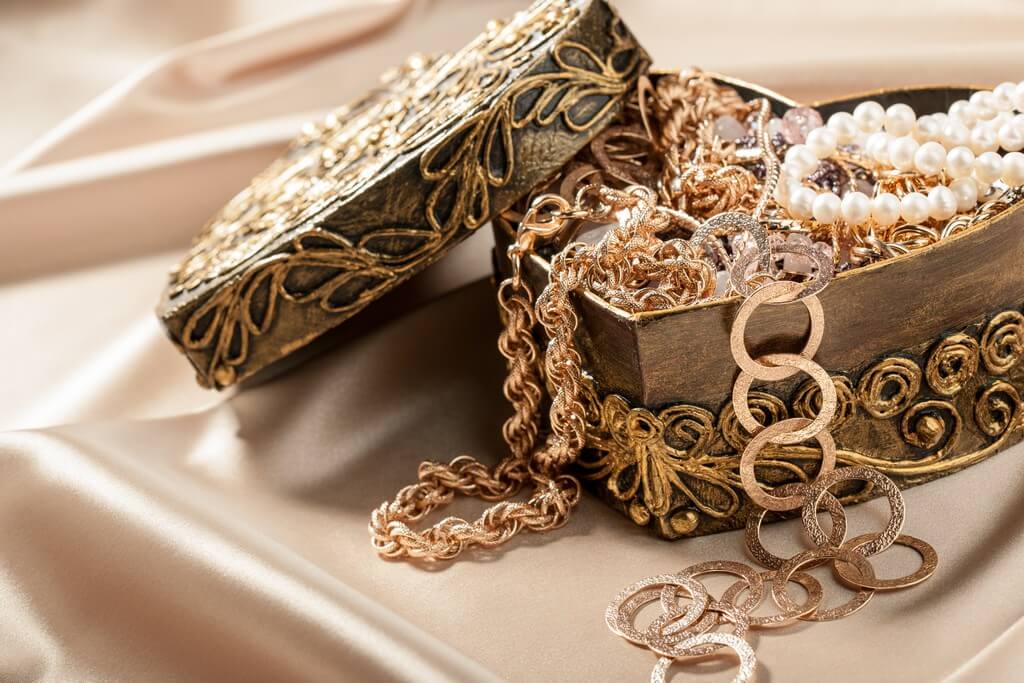
Pure Gold is a bright crimson yellow precious metal rated in Karats (k). It’s like to silver in that it’s one of the Metals of Antiquity and was used for making coins, jewellery and verily coined as a circulating currency ( suppose Gold Standard as financial policy pre 1971).
The world consumption of new gold consists of 50 in jewellery, 40 in investments, and 10 in diligence.
The Hardness of Gold
Pure Gold (24k) is soft and rated2.5 to 3 on the Mohs Hardness scale and accordingly it’s rare for it to be used in its pure form for jewellery.
Gold is alloyed with copper, silver, zinc, nickel, or caution to produce a harder material for the jewellery trade. Typical gold jewellery is generally 14k gold, 16k gold, 18k gold and 21k gold.
In the Alloy process, Yellow, White, Rose and Green Gold can be produced. major like a red lipstick-there’s a tone or color for everyone. For example, Rose gold is warming and consequently favoured by those with palerskin.In any of its variations, gold is a popular choice for marriage bands, rings, earrings, bands and chokers due to its stability and lifetime.
The Pros and Cons of Using Gold for Jewellery Making
Pros:
- Gold is one of the finest metals used for jewellery – traditionally the choice for marriage bands.
- Gold is one of the most malleable ( effortlessly squashed) and ductile ( smoothly stretched) metals, making it easy to work with.
- Gold is resistant to maximum acids.
- Pure gold won’t darken, even so 14k, 16k, 18k will do, but much less so than Silver and over a long time.
- Gold is less allergenic than silver
Cons:
- Another precious and accordingly more expensive than Silver.
- Gold jewellery can get scratched when worn on a day-to-day foundation.
- The presence of nickel may not be suitable for metal aversion cases.
3. Platinum
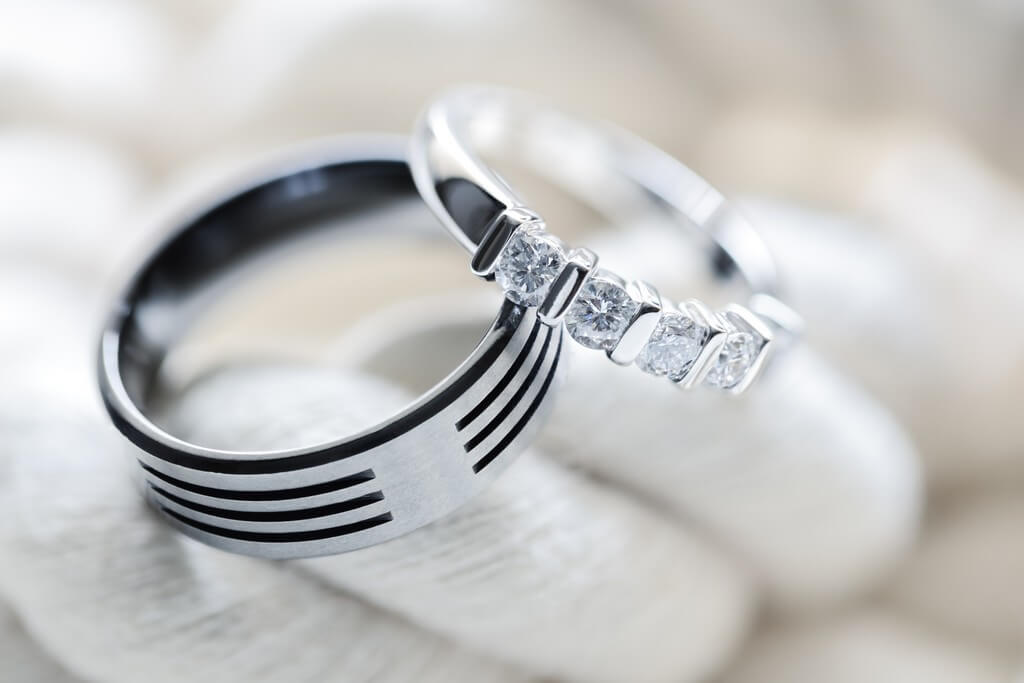
Platinum is a silver-white, broadly thick, and malleable precious metal.
It’s one of the rarest minerals in the world which may explain the laurels behind musicians entering a Platinum disc, or getting a Platinum credit card, and has turn synonymous with luxury and span.
The Hardness of Platinum
Platinum is rated 4-4.5 on the Mohs Hardness scale and therefore less malleable than gold. Because of its hardness, pure platinum is often mixed with other metals to make it more malleable. The most common metals paired with platinum are copper, palladium, rhodium, iridium, and titanium.
The Pros and Cons of Using Platinum for Jewellery Making
Pros:
- Platinum is about thirty times rarer than gold and four times stronger.
- For instance the tips holding the centre stone of a platinum engagement ring are less likely to break additionally those of a gold engagement ring.
- It’s super durable and will no way darken.
- Platinum is extremely erosion-resistant and heat-resistant.
- Platinum is naturally white and won’t fade to yellow.
- Hypo-allergenic tracts make it ideal for sensitive skin.
Cons:
- The deficit of platinum and the fact that the viscosity requires the addition of the rare metal to produce a ring, means that platinum jewellery is commonly more costly than pure gold or white gold.
- Platinum jewellery is generally heavier than that made of gold.
4. Titanium
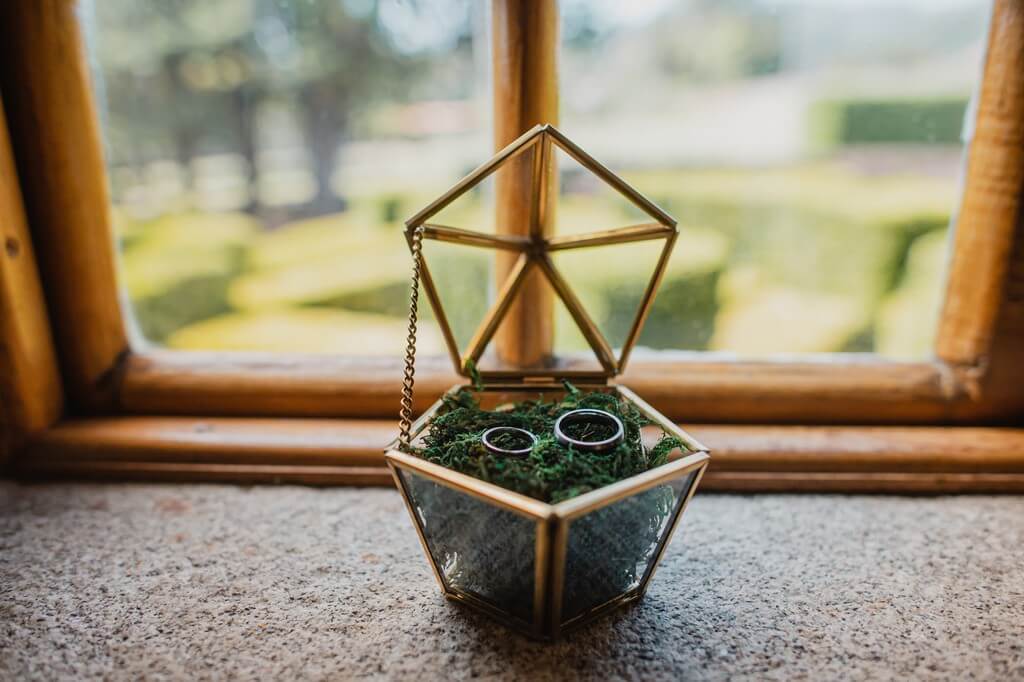
Titanium is used for watch material and wedding bands as well as surgical accoutrements like as fashionableness backups and sporting goods alike as golf clubs and tennis rattle
Titanium is a lustrous, high strength metal with a silver colour.
Titanium was discovered in Cornwall in 1791, and named after the Titans of Greek folklore.
The Hardness of Titanium
Titanium is rated 6 on the Mohs Hardness scale and has the topmost strength- weight proportion of all the natural metals in the world. Titanium and gold produce an admixture that’s retailed and put up as 24-karat gold. The responding admixture is nearly the hardness of 14k gold and added more durable than pure 24k gold – making it favourable for the jewellery trade.
The Pros and Cons of Using Titanium in Jewellery Making
Pros:
- Titanium is fully hypoallergenic
- Titanium is scrape-resistant, featherlight and easy to colour.
- Titanium is largely resistant to chemicals and can be hands down recycled.
- It’s resistant to erosion.
Cons:
- Titanium is authentically dodgy to solder unless it’s been mixed with other metals.
- Titanium isn’t so easy to resize.
- Titanium is extravagant and rare.
What Can Titanium be Used for?
Titanium is used for watch parts and watch cases. Diving watches in particular as it’s erosion resistant.
Titanium is excellent for use in harsh ambients so is continually used for the coverings of submarines, canvas equipage supports, aircraft frames and squirt motorcomponents.Due to how light Titanium is it’s authentically ordinarily used in the sports diligence for tennis racquets, push-bikes and golf clubs.
Titanium is ideal for body- piercing jewellery, prosthetics, dental work and surgical implants, due to its hypoallergenic characteristics. Titanium is used for watch belt and watch cases. Diving watches in particular as it’s erosion resistant.
5. Base Metals
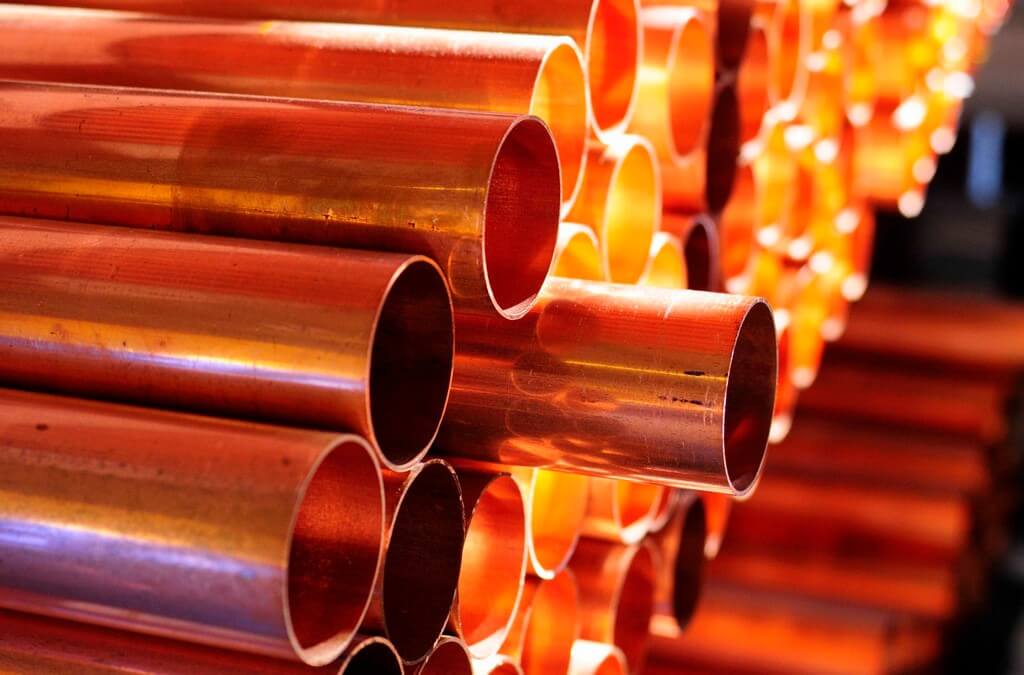
The term ‘Base metal’ is one used in the jewellery industriousness for those metals that oxidise effortlessly and tend to be altogether used for costume jewellery. These accoutrements don’t contain one of the noble or precious metals and are hence significantly cheaper compared to the metals mentioned over. As well as Copper and Brass, Zinc and bronze are also used in jewellery material.
Copper and Brass the two main base metals used in creating jewellery that are semi-precious
[/vc_column_text][vc_row_inner][vc_column_inner width=”1/2″][vc_single_image image=”48072″ img_size=”full” css=”.vc_custom_1640239453502{padding-top: 12px !important;padding-bottom: 12px !important;}”][/vc_column_inner][vc_column_inner width=”1/2″][vc_single_image image=”48073″ img_size=”full” css=”.vc_custom_1640239466519{padding-top: 12px !important;padding-bottom: 12px !important;}”][/vc_column_inner][/vc_row_inner][vc_column_text]
Copper
This is a blood red-orange metal that’s most often used in blends, electrical accoutrements and in copper findings for jewellery raw material. Copper is soft and malleable and fluently stretched.
Brass
Brass is an alloy of Copper and Zinc. The colour of brass is a yellow-gold and is hence used in jewellery to appear gold. It’s continually used in steampunk jewellery.
The Hardness of Base Metals
Base metals are compounds and manufactured to produce different degrees of continuousness and plasticity. Base metals can vary anywhere between 2 and 6 on the Mohs Hardness scale, depending on the fusion compound.
The Pros and Cons of Using Base Metals for Jewellery Making
Pros:
- An affordable and economizing choice.
- broadly available and globally ranged.
- Can be used in 3D printing.
- Their reactivity allows a wide range of colouring approaches to be utilised.
Cons:
- Their exterior is commonly quick to oxidise and taint in air.
- Additional people are averse to base metals than precious metals.
- Base essence can not be marked or used in pieces that will be earmarked.
- Aged base metals might contain traces of lead.
6. Stainless Steel
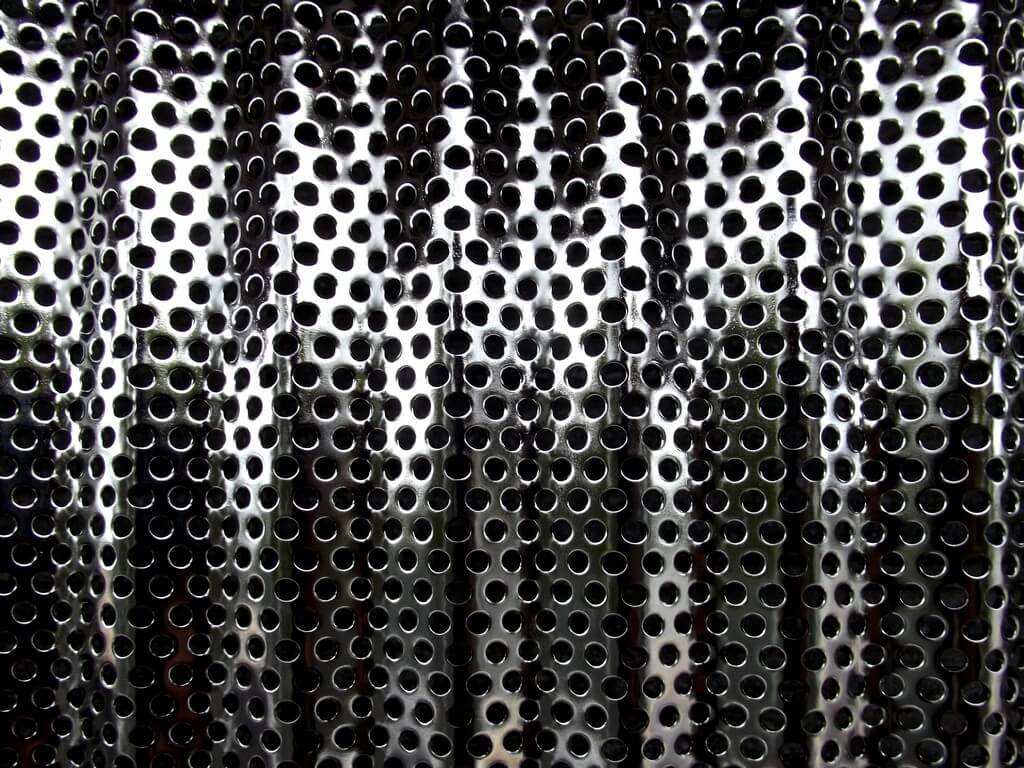
Also known as inox steel, Stainless Steels are Iron blends. It’s durable, rust-resistant,non-corrosive with no discolouration or oxidation. This makes it ideal for use in the jewellery making industriousness for details correspondent as bead caps, earring findings and watches.
numerous jewellery making tools are made from steel alike as columns, drill bits, saw blades, mandrels and hammers, to name but a countable. It’s also ordinarily used for surgical instruments and for manufactured purposes Using a steel needle line to remove surplus solder, snags and buzzes on silver
7. Pearl
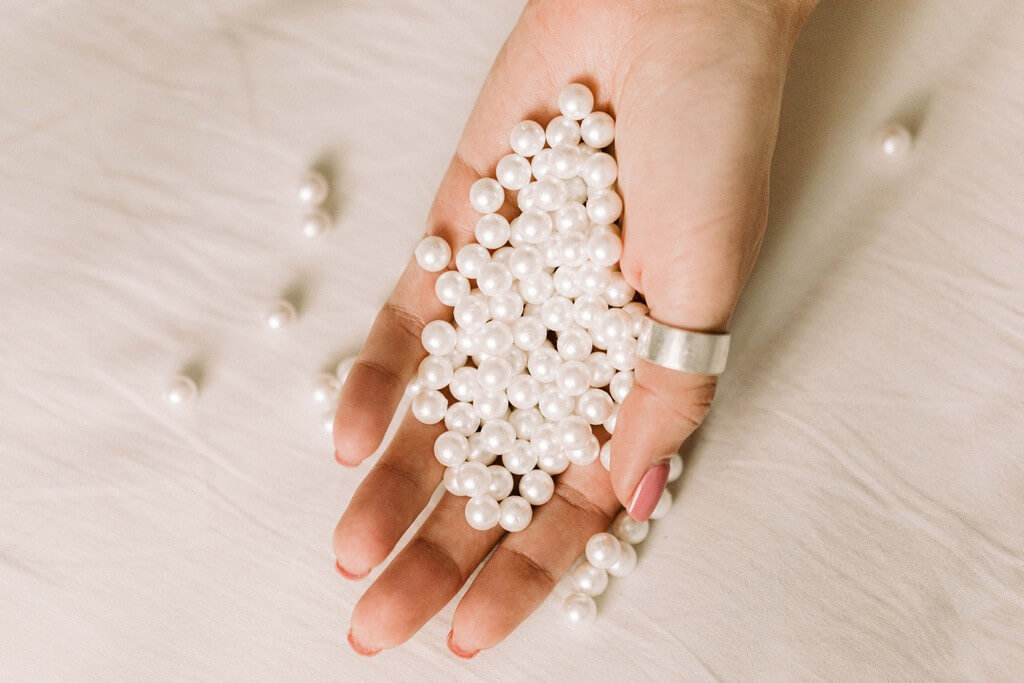
Pearls are soft enough enabling you to work them with steel gem drills or diamond ball buzzes and bound into settings with jewellery adhesives. A pearl is formed in the soft handkerchief of certain molluscs, oysters and mussels for instance. In nature this occurs actually infrequently and accordingly 99 of all jewels present are cropped catches.
Pearls are generally the same colour as the inside of an oyster shell, white and cream but casts of yellow, black and grey are fairly common. The value of pearls in jewellery is predicated on an alloy of the lustre, colour, size, lack of exterior imperfection, and harmony. Pearls are associated according to their variety- naturally being, or contemporary cultivated pearls seawater or hard cropped.
Concentric layers of deposited calcium carbonate make up a pearl, much like an onion. Pearls are mainly used for necklaces, earrings, bracelets and rings and are normally made into a string of pearls.
The Hardness of Pearl
It’s ranked2.5-4.5 on the Mohs hardness scale, and is accordingly moderately soft and so can be scratched or abraded.
The Pros and Cons of Using Pearls when Making Jewellery
Pros:
- Pearls are organic, with a unique everlasting quality.
- Pearls are soft enough enabling you to work them with steel pearl drills or diamond ball whizzes and fastened into settings with jewellery glues.
- Pearls can be modified with colors, decolorized or overlayed with lacquer.
- Pearl jewellery can be fluently looked out for and polished with Beeswax and when given the proper care, will retain their value for a standing. Cropped pearls are affordable.
- In it’s organic, natural form, the catch is a thing of beauty so it does not need to be cut, polished or manipulated in any way before making jewellery with it.
Cons:
- Pearls may lose their lustre over time as the nacre wears away
- Natural pearls are genuinely priceless
- They’re soft, so handily damaged.
- Constant contact with indeed the mildest of acids or chlorine will erode the nacre of the pearl and they will lose their lustre.
8. Shell
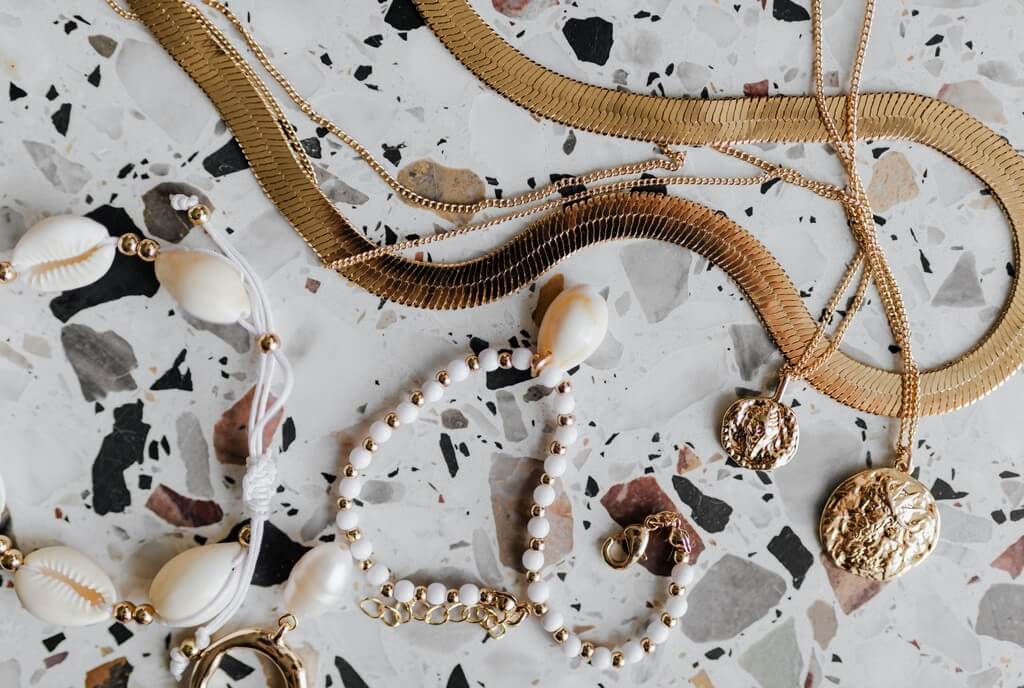
Shell beads are one of the oldest forms of jewellery and over the cycles has seen it’s fashionableness come and go with fashion trends matching as gem rings, earrings and brooches back in the 1800’s.
Popular types of Shells used for jewellery are Paua, Mother-of-Pearl, Cowrie, Oyster, Abalone and Puka, to name but a few.
The whole shell, or region of the shell can be used in jewellery and decorations. Broken pieces pioneer on the strand can be cut, filed and smoothed to suit your essentials.
Nothing but shells unless you know for sure they’ve been inaugurated and collected, rather than gathered. Moreover, it can be illegal to take certain types of shells from particular strands so nothing is assumed.
The Hardness of Shell
Shell is around 3 on the Mohs scale of hardness.
Shells differ in shape and form and can hence vary in hardness and rudeness and vary in how rough or how smooth they are.
The Pros and Cons of using Shells in Jewellery Making
Pros:
- Since the summer of 2018 shell jewellery has been on trend, so if you are in the jewellery making business now’s the time to go beachcombing.
- Shells can effortlessly be drilled, cut and sculptured using ordinarily available jewellery and framing tools.
- Shells can be fluently disemboweled, threaded and polished.
- When it has been introduced on the sand.
Cons:
- Since the summer of 2018 shell jewellery has been on trend, so if you are in the jewellery making business now’s the time to go beachcombing.
- Shells can smoothly be drilled, cut and sculptured using normally available jewellery and drafting tools.
- Shells can be fluently drawn, concatenated and polished.
- When it has been a pioneer on the sand.
What can Shells be Used for?
From cameos to mosaics, earrings, rings and pendants, shell inlays on tools, relics, fossils and furnishings- craftspeople love to work with shells.
9. Animal Remains (Bone and Hair)
[/vc_column_text][vc_row_inner][vc_column_inner width=”1/2″][vc_single_image image=”48077″ img_size=”full” css=”.vc_custom_1640239572451{padding-top: 12px !important;padding-bottom: 12px !important;}”][/vc_column_inner][vc_column_inner width=”1/2″][vc_single_image image=”48078″ img_size=”full” css=”.vc_custom_1640239600147{padding-top: 12px !important;padding-bottom: 12px !important;}”][/vc_column_inner][/vc_row_inner][vc_column_text]
Jewellery made of animal hair and bone, was the very first jewellery ever made
In the Victorian age, Mourning Jewellery was de rigueur. Whilst some may allow it a little odd or ghastly, what could be more eco-friendly than-using the bones and hair from fallen beasts- perchance your own favorite faves like as with Irish jewellery artist Daniela Cardillo.
10. Seeds and Nuts (Rudraksha Seed prayer beads)
[/vc_column_text][vc_row_inner][vc_column_inner width=”1/2″][vc_single_image image=”48058″ img_size=”full” css=”.vc_custom_1640240863380{padding-top: 12px !important;padding-bottom: 12px !important;}”][/vc_column_inner][vc_column_inner width=”1/2″][vc_single_image image=”48059″ img_size=”full” css=”.vc_custom_1640240877876{padding-top: 12px !important;padding-bottom: 12px !important;}”][/vc_column_inner][/vc_row_inner][vc_column_text]
The jewellery made from seeds and nut are mainly used for religious purposes
For thousands of years seeds, nuts and the roots from factories have been used to decorate the body in varied lives across the World. Popular choices of seeds and nuts for making drips or for using in jewellery timber are Tagua (Ivory Palm Nut), Betel, Bodhi, Rudraksha, Acai and Buri.
The Pros and Cons of using Seeds and Nuts When Making Jewellery
Pros:
- Broadly available.
- Authentically economizing- try growing your own shops and dry the seeds.
- Easy to sculpt, drill and polish.
- Extremely weightless so ideal for use in bunching.
- Multiple seeds are fast growing making them a sustainable material.
Cons:
- Fragile.
- Can be broken if crashed or knocked.
- Not water resistant. Seeds and nut droplets can swell if in contact with water.
11. Wood
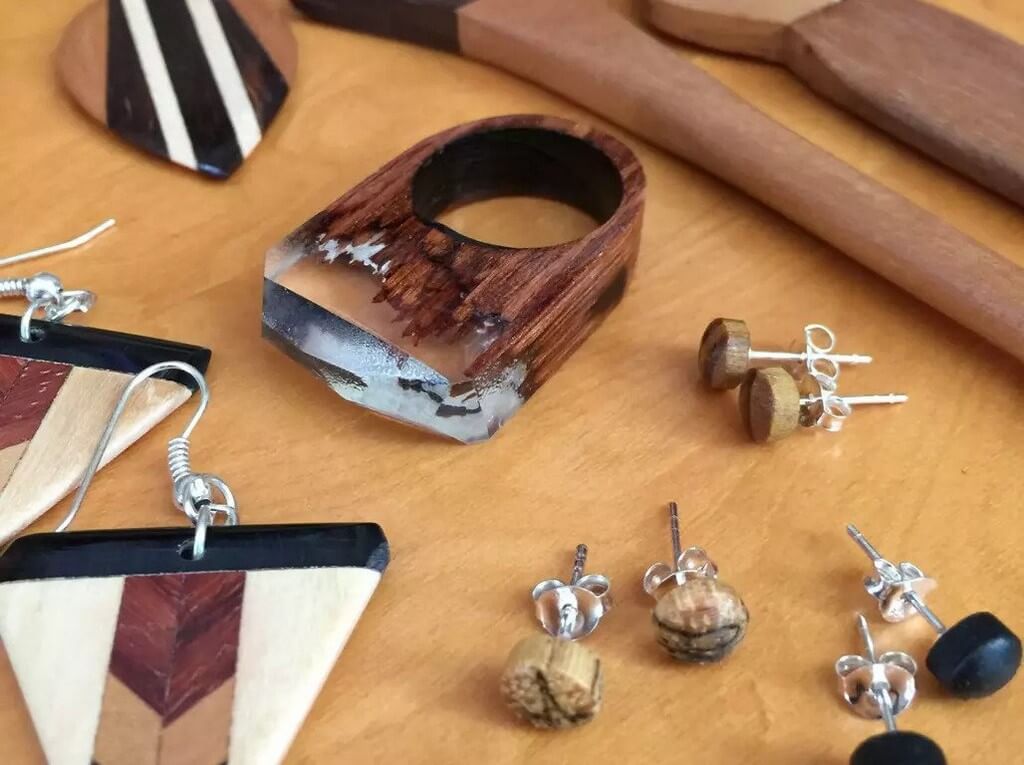
Wooden jewellery alike as beads, charms and pendants have been popular for thousands of ages. The necessity for using eco-friendly stuff hasre-popularised the use of saved, recovered or storm- felled wood in jewellery design.
Jewellery can be made out of any type of wood, hardwoods being preferable, but the grain, colour and finish of the wood may determine which you use for your designs.
The Pros and Cons of using Wood in Jewellery Making
Pros:
- Economizing, especially if you’re using brought off, drift wood or recycled wood in your jewellery material.
- Wood can be freely manipulated, sculpted, shaped, cut and polished.
- Wood is weightless so makes an ideal choice for a statement necklace or earrings, large pendant, chunky bangle or huge beads.
Cons:
- Wood absorbs water so avoid soaking.
- It’ll be prone to knocks, bumps and bashes so care must be taken especially with wooden watches and rings.
- The natural colours of wooden jewellery may fade or darken over time due to the natural essentials.
12. Stone
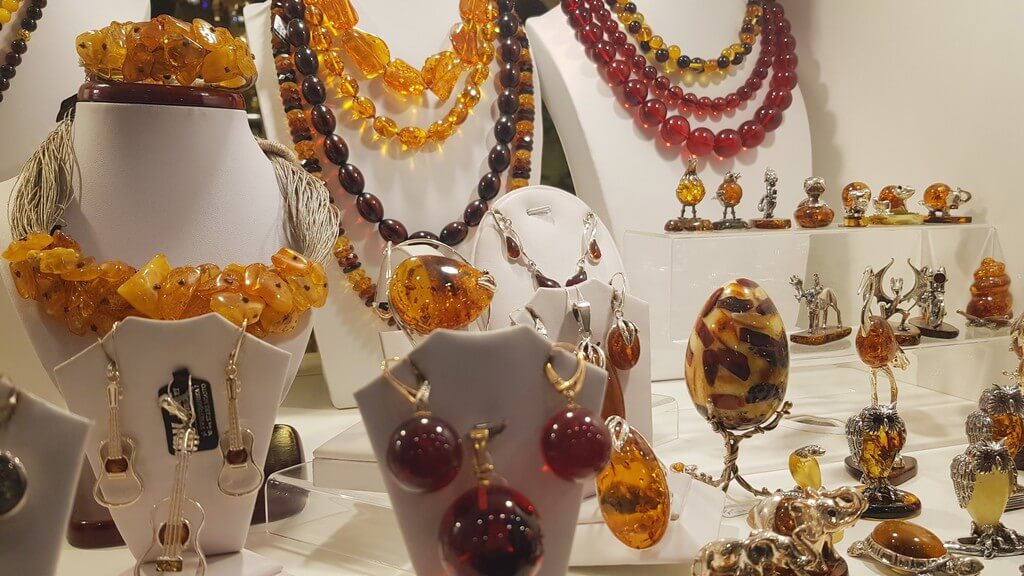
Semi precious,non-precious, and precious. Rock, slate, sand pebbles, blunder and concrete. The vast array of gravestones, gems and jewels used in jewellery raw material is endless. Some of the most desirable gems used in jewellery material are Diamond, Ruby, Emerald and Sapphire.
The type of stone or gem you choose can depend on what the stone means to you (e.g. birthstone, inheritance), how it looks (the grain, colour, shape), how it feels (the texture or energy it gives you), where you sourced it from, ( institute on a sand, reclaimed, a stone that’s domestic to your area) or a special memory it gives you.
The Pros and Cons of using Stone in Jewellery Making
Pros:
- The variety of texture, colour and finish is vast.
- Can be faceted, cut, drilled, polished, sculptured and manipulated in multiple ways.
- Possible investment-If the stone is precious.
Cons:
- Some stones can be affected by chemicals, greases and contaminations.
- Chips and breakages may come down
- Special diamond tools are demanded to manipulate stone so it can be priceless to work with.
13. Glass
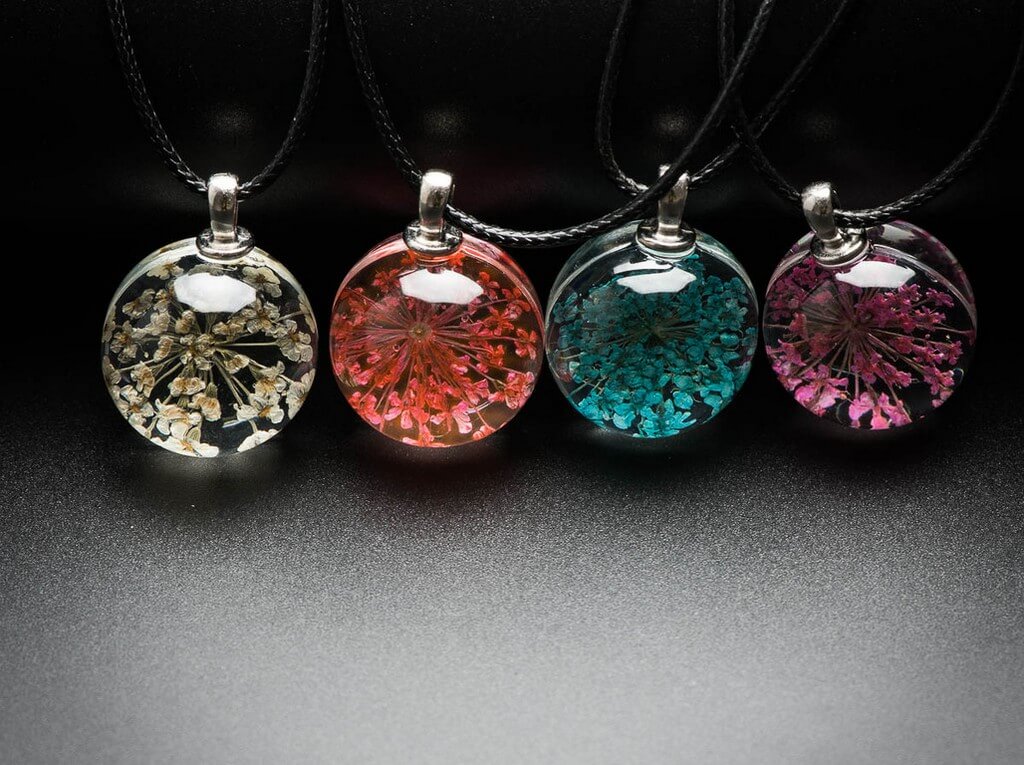
Glass beads, particularly Venetian, are historically one of the first glass jewellery objects to be made popular. Presently, we see chromatic forms of glass in jewellery design like Fused Glass (dichroic and art glass), Lampwork, Murano (Venetian and Millefiori) and Sea Glass.
Glass rods can be warmed and shaped into beads corresponding to lampworking. Glass can be warmed and fused. Cold glass can be engraved, cut, shaped, drilled, ground and polished. Or, glass can simply be used in its natural form ditto as we see in deep glass ( sand glass).
The Pros and Cons of using Glass for Jewellery Making
Pros:
- Glass can be toasted to cause chromatic different shapes and forms
- Available in a myriad of colours
- Glass droplets can be handily and cheaply produced and are more thrifty than crystal ( glass with lead in)
Cons:
- Glass is authentically fragile. Whilst it’s genuinely hard, it can also be fluently pureed or broken.
- Glass jewellery can be heavy so it’s elegant to make delicate beads, earrings, necklaces and pendants.
- Cold working tools have to be made out of synthetic diamond fiber due to the hardness of glass, making the tools priceless.
14. Enamel
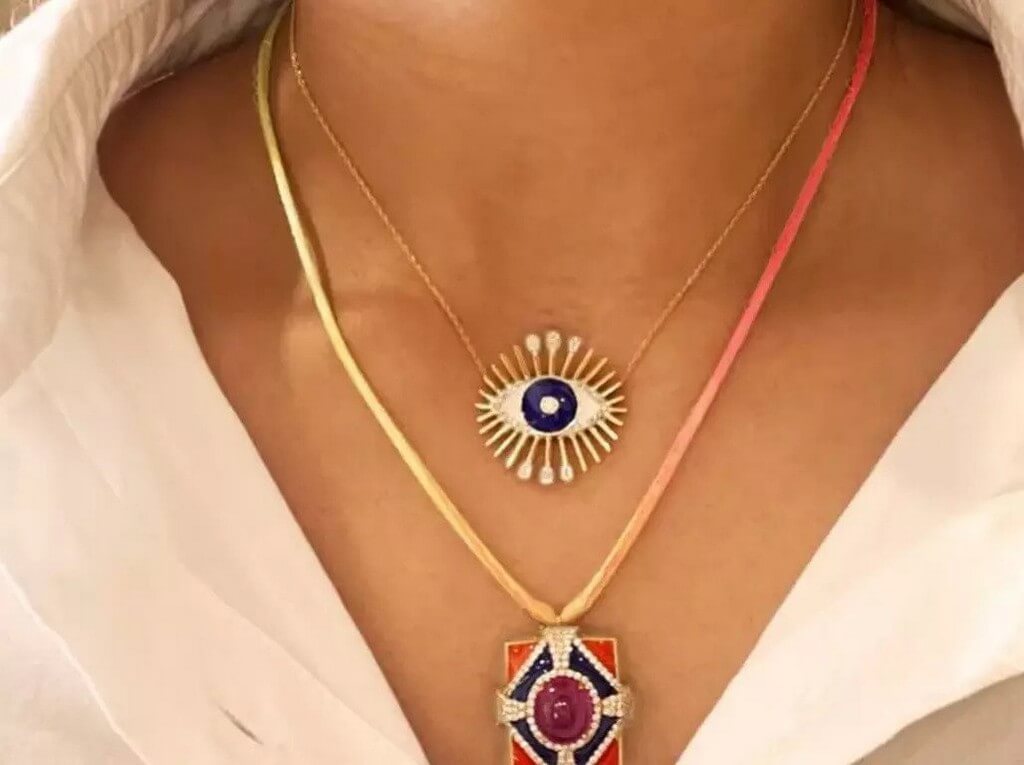
Enamel is a glass- alike bracket which is genuinely hard and grind resistant. It’s made by fusing a glass greasepaint at high temperatures onto metal.
Occasionally related to Vitreous enamel or chinaware enamel, common methodologies in enamelling are Cloisonne, Champleve, Baisse-Taille and Plique-A-Jour.
15. Acrylic, Resin and Plastic
[/vc_column_text][vc_row_inner][vc_column_inner width=”1/3″][vc_single_image image=”48066″ img_size=”full” css=”.vc_custom_1640239718782{padding-top: 12px !important;padding-bottom: 12px !important;}”][/vc_column_inner][vc_column_inner width=”1/3″][vc_single_image image=”48065″ img_size=”full” css=”.vc_custom_1640239734901{padding-top: 12px !important;padding-bottom: 12px !important;}”][/vc_column_inner][vc_column_inner width=”1/3″][vc_single_image image=”48067″ img_size=”full” css=”.vc_custom_1640239762272{padding-top: 12px !important;padding-bottom: 12px !important;}”][/vc_column_inner][/vc_row_inner][vc_column_text]
Acrylic, Resin and plastic jewellery are widely used for casual outfits and for daily use
Acrylic beads are genuinely affordable and consequently make a great starting point for a newcomer jeweller who wishes to dabble in beading. Resin is poured into the dirt to form shapes. It cries out for effects to be added into the resin whilst setting so is actually adaptable and enjoyable to explore.
The Pros and Cons of using Acrylics for Making Jewellery
Pros:
- Weightless
- Affordable, especially when buying mass-market or in bulk.
- Acrylic is a good option to glass as it’s lighter, yet stronger, and stays cool in hot downpour.
- Durable and flexible in that it can be formed into shapes and all genres of colours.
- Resin can have details added to it whilst in the earth, making it delightful and explorative.
Cons:
- Can scratch and mark effortlessly. (but can also be buffed out fluently)
- Will melt if exposed to honey.
- Releases poisonous smothers when at high temperature so you need to be careful of using any rotary tools to cut or grind the acrylic.
- Not as dazzling as glass.
16. Clay: Ceramic, Porcelain and China
[/vc_column_text][vc_row_inner][vc_column_inner width=”1/3″][vc_single_image image=”48069″ img_size=”full” css=”.vc_custom_1640239787321{padding-top: 12px !important;padding-bottom: 12px !important;}”][/vc_column_inner][vc_column_inner width=”1/3″][vc_single_image image=”48071″ img_size=”full” css=”.vc_custom_1640239809309{padding-top: 12px !important;padding-bottom: 12px !important;}”][/vc_column_inner][vc_column_inner width=”1/3″][vc_single_image image=”48070″ img_size=”full” css=”.vc_custom_1640239820602{padding-top: 12px !important;padding-bottom: 12px !important;}”][/vc_column_inner][/vc_row_inner][vc_column_text]
Ceramic, porcelain and clay jewellery are the most popular form of handmade jewellery across the globe
Ceramic beads can either be made in a soil to repeat the same shape over and over, or made by hand to bring on a more organic sensation. It’s genuinely on trend to make jewellery from broken pieces of china. This can be done by cutting shapes or circles out of chinaware or porcelain plates, or by using established sand pottery which has been washed and smoothed by the ocean and used in the organic form it has been in.
The Pros and Cons of using Ceramic/Porcelain for Jewellery Making
Pros:
- Authentically hard wearing and scrape-resistant.
- Hypoallergenic, so ceramic marriage bands are a good discretion for those who have averse takes to metals.
- Lightweight.
Cons:
- Porcelain in particular is extremely hard to cut, drill or grind.
- Can be brittle making it easy to grate or crack.
17. Polymer Clay
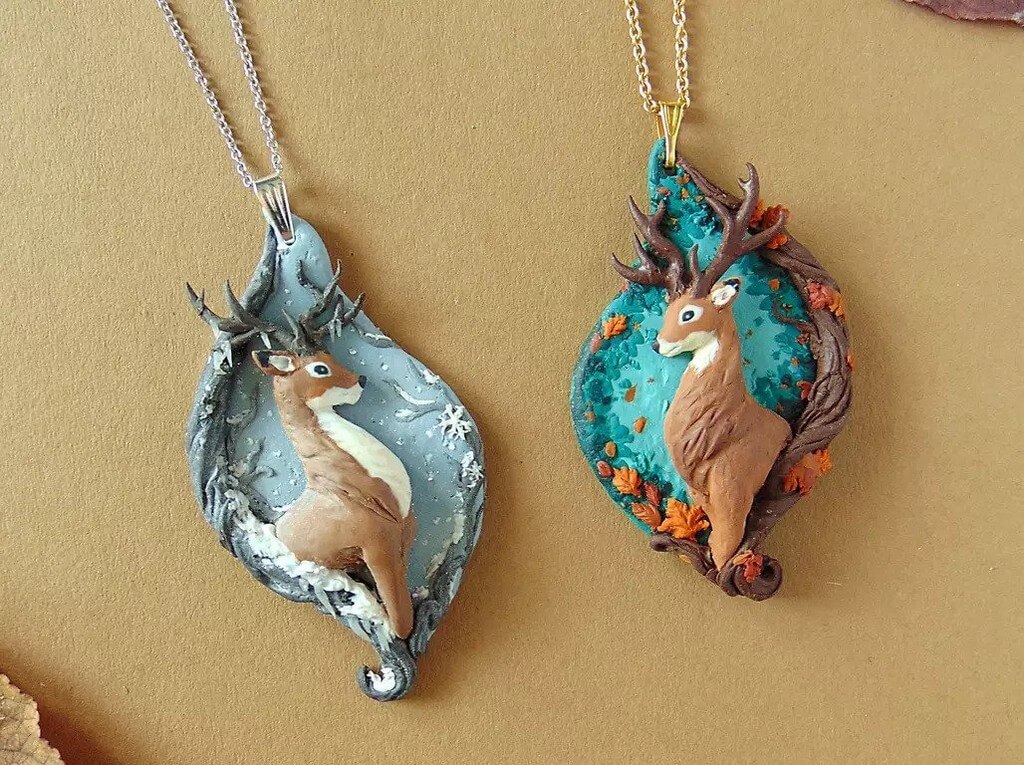
In its numerous forms and colours, Polymer character is an affordable, universal and durable material to work with when jewellery raw material. Polymer complexion is a good material for freshmen as it’s super easy to use and comes in an array of colours and sheens, as in the wide range of metal constitution available.
Jewellery making is an art of bringing to life a curated design with the help of various materials of metal and stones. At JD Institute, the jewellery designing courses offered are structured to not only impart knowledge on the various design thinking methods, but also the usage of various materials, both precious and semi-precious. Through this program, the students will be able to attain the required knowledge to be a part of the industry as well as build their own start-up.
Jewellery Making: The Materials Used!
[/vc_column_text][/vc_column][/vc_row]













